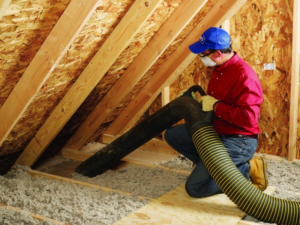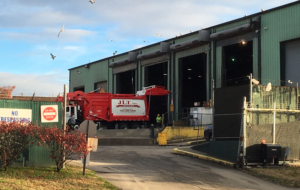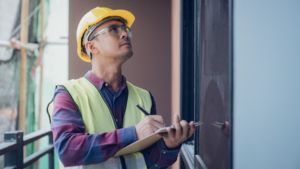Insulation is an important part of a home. It helps to keep warm air inside during the winter and cool air during the summer, which can save on energy bills. It also protects against moisture and mold spores that can cause structural damage to a home.
However, removing old insulation is a messy job and requires proper safety precautions. This article will cover the equipment you need and how to prepare for the work. For more information, click the Perth Insulation Remover to proceed.

When removing insulation, it’s important to have the right equipment. You’ll need a powerful insulation removal vacuum and protective gear such as goggles, a dust mask or respirator, and gloves to protect your hands from irritating particles. If you don’t have the right tools, removing insulation can be a messy and difficult job. It’s also important to make sure that your workspace is well-ventilated so you don’t inhale the particles.
Before starting the process, it’s a good idea to turn off or disconnect any power lines in the attic where you’re working. This will prevent any damage to your electrical system and will ensure the safety of you and your family. It will also help to minimize the risk of fire. Moreover, it’s a good idea to close any open doors and windows to prevent the spread of airborne contaminants.
Insulation removal is a tricky and messy task, and it can be dangerous if not done properly. This is why you should hire a professional insulation removal service to get the job done right. This will save you time and money. In addition, the professionals will use only the best equipment to ensure maximum efficiency and safety.
Blown-in insulation is a popular option for many homes because it offers an affordable way to increase energy efficiency and reduce noise. This type of insulation is blown into attics, crawl spaces, and rim joists. It is usually made of fiberglass, cellulose, or mineral wool. It can be blown into existing homes as loose-fill, dense packed into walls and floors, or wet sprayed for new construction.
You should also consider cellulose or mineral wool insulation for your home, as they are environmentally friendly and are often derived from recycled materials. They are also flame retardant and can reduce your home’s energy costs. These types of insulation are also moisture resistant and mold-proof. In addition to reducing your home’s energy consumption, these products can also reduce unwanted moisture in the attic. This is because cellulose and mineral wool can absorb water, preventing it from reaching the attic.
Insulation is a common material used in homes to keep them warm in winter and cool in summer. It is usually installed in the attic, walls, and floors of a house. Insulation can be made from a variety of materials, including fiberglass, cellulose, and foam. While installing insulation, it is important to follow safety measures to ensure the health of the homeowner and their family. This includes using a protective suit and ensuring the proper equipment is used for the job.
It is also a good idea to wear goggles and a dust mask during the process. This will help prevent irritation and allergens from the insulation fibers. It is also a good idea to wear a hard hat to protect yourself from falling debris or other hazards.
Old or moldy insulation can be a significant health risk and a structural risk for your home. It can also reduce the energy efficiency of your home. It can also be a nesting site for pests, which can cause damage to your home and harm your indoor air quality. Therefore, it is important to remove and replace your insulation regularly.
When working with fiberglass insulation, you should always wear a face mask and gloves to avoid irritation and contact with the materials. This can be a messy and laborious task, but it is essential to protect yourself. Additionally, you should be careful not to disturb the electrical wiring in the attic. This can be dangerous and can result in fires and electrical shock.
Blown-in cellulose and fiberglass insulation can be toxic to humans when they come into contact with them, so it is important to take care when handling them. The material can contain formaldehyde, which is known to cause skin, nose, and eye irritation. It can also contain carcinogenic asbestos, which can cause lung diseases.
The most effective way to handle these materials is to use a wire stripper. This tool is available at most hardware stores and can be purchased for a relatively low price. The stripper is a small, hand-held device that can be used to remove insulation from around electrical wires. This is especially important for older homes with ungrounded wiring.
Insulation is a critical component of your home’s overall energy efficiency, but pest infestation, rodents and general wear and tear can damage it. Damaged insulation may lose its ability to keep your house comfortable, increase health risks and contribute to higher energy bills. Often, the best course of action is to remove and replace the damaged insulation to restore your home’s energy efficiency and health.
The time it takes to remove insulation can vary, depending on the type of insulation and your experience level. However, it’s important to prepare for the project before you start. Clear out the space under your attic access ladder and cover walls and floors that will be exposed to debris. Make sure you have a HEPA filtered commercial vacuum with a hose, large waste bags and a dumpster for disposal. It’s also a good idea to invest in protective gear such as rubber-coated gloves, masks or respirators and goggles to protect your skin and eyes from dust and mold.
If your home has cellulose or fiberglass batt insulation, the first step in replacing it is to remove all the old material from the attic space. This can take four to 24 hours for a 1,500-square-foot attic. You should spread plastic over your living spaces to prevent the spread of the contaminated insulation particles down into your home. If your house has a chimney, be sure to cover it with plastic or a tarp to prevent a fire hazard.
In addition to reducing air flow, old insulation can cause moisture problems. Moisture breeds mold, which can be difficult to control and is a risk to your family’s health. In addition, wet insulation can lead to rot and other structural damage to your attic or wall cavities.
An experienced contractor will assess the condition of your insulation and recommend the best course of action to restore it to its original R-value. In many cases, the best solution is to remove and replace it, especially if rodents, mold or water have compromised the existing insulation.
Insulation plays a critical role in the comfort of your home. It provides a barrier against hot and cold temperatures, resulting in lower energy costs for heating and cooling. It also improves indoor air quality and protects against rodent infestation. However, if your insulation is old and damaged, it may pose health risks such as dust and mold spores. Removing this material and replacing it with new insulation is a good investment that will save you money in the long run and provide your family with a safer, more comfortable living environment.
A professional insulation removal service will ensure that the job is completed properly and without any damage to your home’s structure. They will also follow proper safety procedures and dispose of the insulation according to environmental regulations. In addition, these professionals have an in-depth knowledge of the various types of insulation, including fiberglass batts and cellulose, and are aware of the best practices for each.
The cost of insulation removal depends on a number of factors, including the type of insulation and its condition. For example, if the insulation is bagged and contaminated, it will be more expensive to remove than unbagged and clean insulation. The price will also increase if the insulation is in a difficult-to-access area, such as a crawl space or basement.
In addition to the basic cost of labor, you will have to pay for the equipment and supplies needed to complete the project. These include a commercial vacuum system, a pair of gloves, and masks. For more complex jobs, you may need to hire a licensed asbestos abatement contractor. This is particularly important if your attic or home contains vermiculite, which often contains asbestos.
Removing old and installing new insulation will make your home more energy efficient, which will reduce your energy bills. It will also increase the resale value of your property and make it more appealing to potential buyers. If you’re considering putting your home on the market, you should consider having the insulation removed and replaced prior to listing it. This will help ensure that you get a fair offer on your home and prevent a lot of hassle during the selling process.








